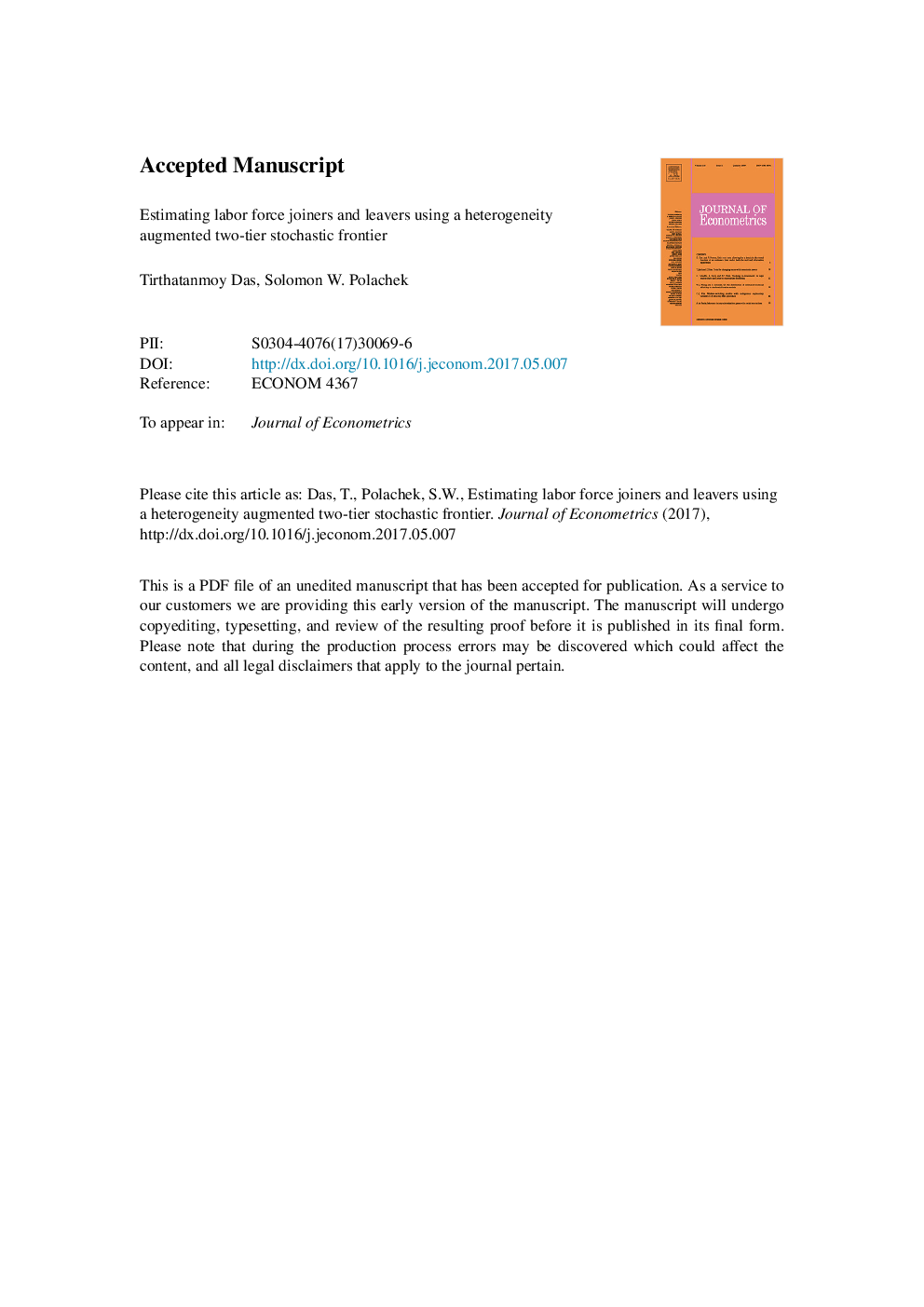| Article ID | Journal | Published Year | Pages | File Type |
|---|---|---|---|---|
| 5095474 | Journal of Econometrics | 2017 | 45 Pages |
Abstract
In a seminal paper, Basmann (1985) introduced a serial correlation structure based on an intertemporal adjustment mechanism. Basmann's 1985 paper of course was built on his previous pioneering work on estimation and identifiability in structural equations leading to 2SLS (Basmann, 1957, 1960). In this paper, we follow a similar path. We derive a non-standard unit root serial correlation formulation for intertemporal adjustments in the labor force participation rate. This leads to a tractable three-error component model, which in contrast to other models embeds heterogeneity into the error structure. Unlike in the typical i.i.d. three-error component two-tier stochastic frontier model, our equation's error components are independent but not identically distributed. This leads to a complex nonlinear likelihood function requiring identification through a two-step estimation procedure, which we estimate using Current Population Survey (CPS) data. By transforming the basic equation linking labor force participation to the working age population, this paper devises a new method which can be used to identify labor market joiners and leavers. The method's advantage is its parsimonious data requirements, especially alleviating the need for survey based longitudinal data.
Keywords
Related Topics
Physical Sciences and Engineering
Mathematics
Statistics and Probability
Authors
Tirthatanmoy Das, Solomon W. Polachek,
